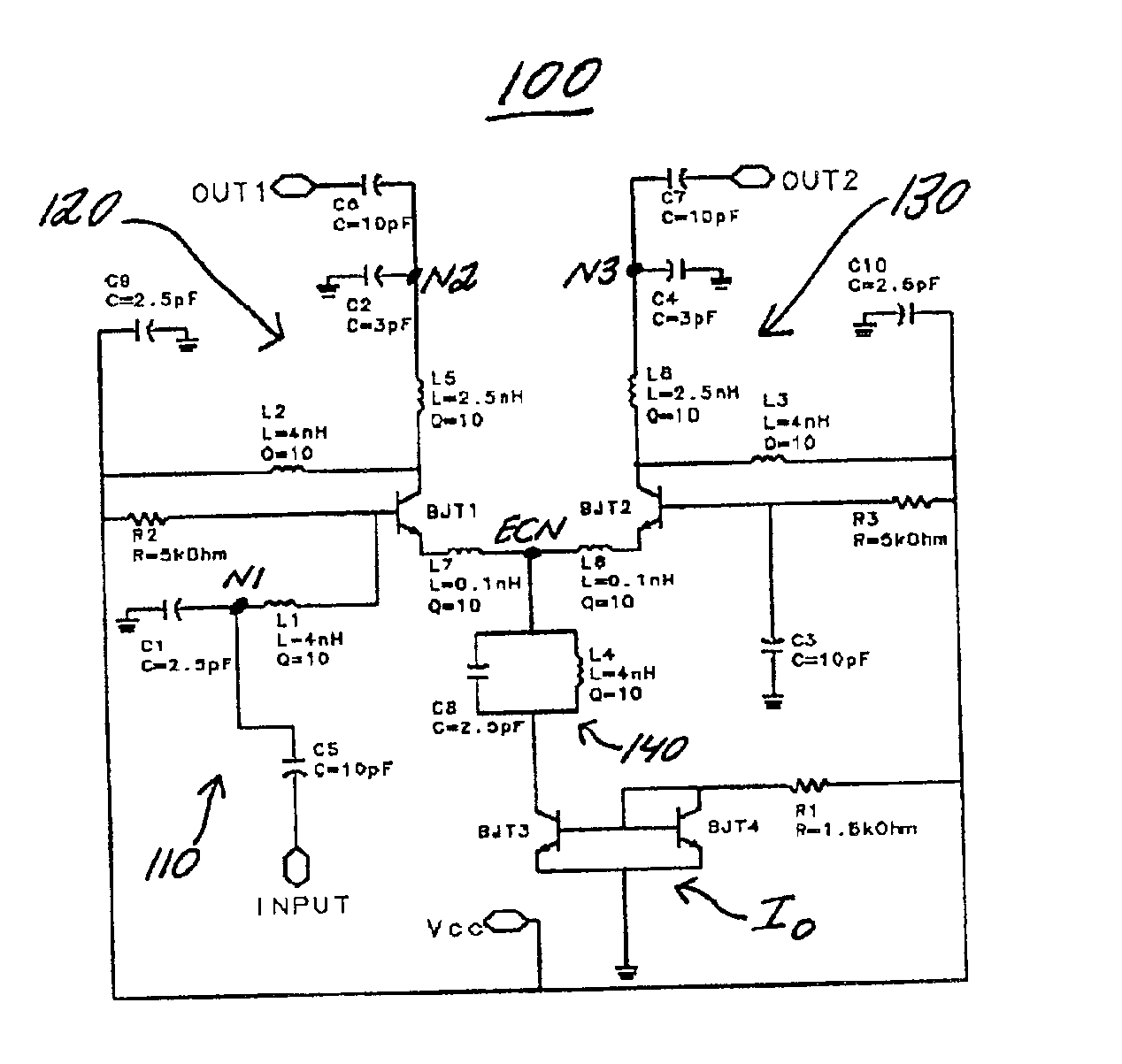Active balun circuit for single-ended to differential RF signal conversion with enhanced common-mode rejection
a technology of active balun and common-mode rejection, which is applied in the field of integrated circuits and subsystems, can solve the problems of affecting signal balance, increasing parasitic capacitance, and limited dynamic range of active balun, and achieves enhanced common-mode rejection, enhanced common-mode rejection, and high linearity
- Summary
- Abstract
- Description
- Claims
- Application Information
AI Technical Summary
Benefits of technology
Problems solved by technology
Method used
Image
Examples
Embodiment Construction
I. Description of the Circuit
[0012]FIG. 1 is a circuit schematic of the circuit according to the present invention. The circuit is designated generally by reference numeral 100. It is a differential pair amplifier with single-ended input and balanced output.
[0013]The circuit 100 includes a parallel inductor-capacitor (LC) band stop resonator 140 between the emitter-coupled node ECN and the current source Io. The LC band stop resonator 140 includes a capacitor C8 connected in parallel with an inductor L4 which filter out the unwanted parasitic parameters, e.g., parasitic capacitance or oscillations, at RF frequency. A first terminal of the LC band stop resonator 140 is connected to the emitter-coupled node ECN and a second terminal of the LC band stop resonator 140 is connected to a collector of the transistor BJT3. A first terminal of a resistor R1 is connected to the base of the transistors BJT3, BJT4 and a collector of the transistor BJT4. A second terminal of the resistor R1 is c...
PUM
 Login to View More
Login to View More Abstract
Description
Claims
Application Information
 Login to View More
Login to View More - R&D
- Intellectual Property
- Life Sciences
- Materials
- Tech Scout
- Unparalleled Data Quality
- Higher Quality Content
- 60% Fewer Hallucinations
Browse by: Latest US Patents, China's latest patents, Technical Efficacy Thesaurus, Application Domain, Technology Topic, Popular Technical Reports.
© 2025 PatSnap. All rights reserved.Legal|Privacy policy|Modern Slavery Act Transparency Statement|Sitemap|About US| Contact US: help@patsnap.com


